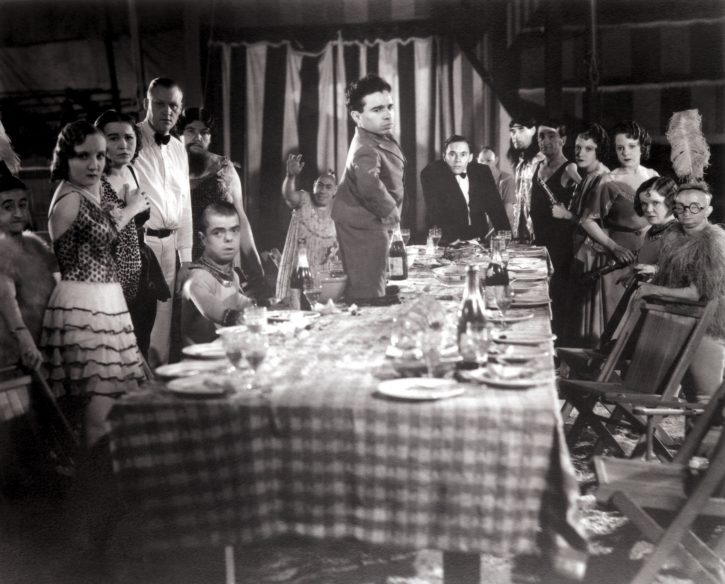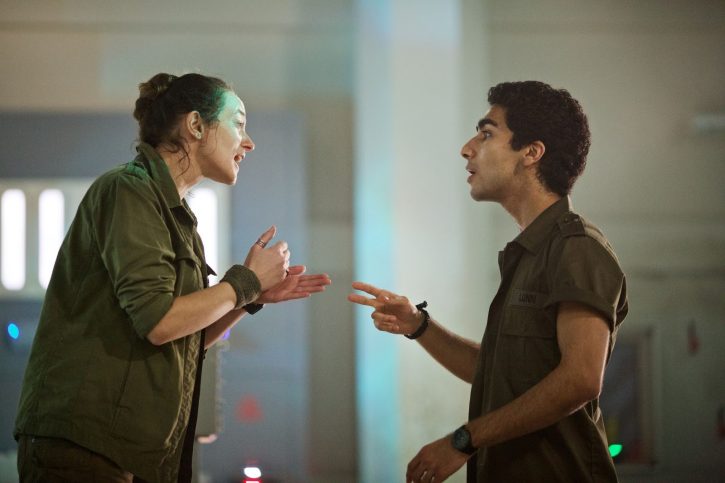While many believe that a film’s main purpose is to entertain, films do much more than that. They educate us. They empower us. They make us feel a plethora of emotions. Films introduce us to characters and worlds we may not know or understand.
I’m an existential filmmaker. As such, I always strive to make my films as accurate to the cultures and individuals represented within them. As filmmakers, when we are depicting certain cultures, minority groups, or individual representations, unless our films are parodies or stereotyping inaccurate depictions is essential to the plot or film style (i.e. exploitation style filmmaking), we should strive to make these depictions accurate.
As much as media should not be held responsible for how people are represented, society looks to film when we do not understand something. Before people in the LGBTQ community were able to be out and proud without fear of hatred or retaliation, we looked to movies, television and other media representations for how we should treat the LGBT community. Sadly, in the past (and sometimes still today) LGBT individuals were portrayed as sinful, wicked, villainess, and harmful. The only solution was to kill them, because they deserved to die. Luckily, filmmakers are starting to move past this, and many depictions of LGBT people today are more positive. We are starting to see the LGBT community portrayed as human beings capable of loving, healthy relationships, who are parents, children, siblings, and other loved ones. Of course, I’m not saying LGBTQ-identifying people cannot be villains, because they can. Just that when they are villains, their villainy should be because they are evil, not because of their gender identity or sexual orientation.
One community that struggles with representations is the disability community. There has been some research into the negative depictions of disability in the media, though not nearly enough. I spent time in college, in my film program doing my own research for more than one independent study on the topic. In the early days of cinema, people with disabilities were also seen as evil villains that must be killed (Tod Browning’s Freaks though amazing, portrays the dangers of this – this is also a common theme in James Bond films).
Today, characters with disabilities are mostly viewed as objects of pity (A Christmas Carol), self-hating (Passion Fish), better dead than disabled (The Sea Inside), less than normal (Million Dollar Baby), super heroes (think Forest Gump or The Boy who Could Fly), and their disability, or the character themselves, are almost exclusively used as a plot device to move the protagonist’s story forward. Seldom are these characters the protagonist themselves, but when they are, the entire plot focuses on how the character has overcome insurmountable odds that their disability has placed in front of them, with little focus on anything other than the disability (and the limits it supposedly imposes on the poor, pathetic, cripple person). They are such humongous inspirations, and are so courageous for living their lives, the audience should be grateful they are “normal” people themselves.
I won’t even get into the lack of representation of actors with disabilities in film. That’s an entirely different topic, and I can write an entire book on that subject alone! What I will say is that having able-bodied actors portraying roles written for those with disabilities provides an extra layer between accurate portrayals of disability that is not present if the actor already has a disability. We live with disabilities so we understand already. That is not something you can teach an able-bodied actor. We don’t have to pretend to be disabled. We simply are.
With that in mind, I have some tips that can help make characters with disabilities more accurate. These are tips filmmakers can use so that their films are not harmful to one of the communities they seek to represent in their work.
Audition actors with disabilities
When you’re casting your film, you should always cast the best actor for the role. This may not be the actor with a disability, though it probably is because they can bring a level of authenticity non-disabled actors will never have. You limit yourself if you are only auditioning able-bodied actors. The reason why there are not very many actors with disabilities that are known is because not many actors with disabilities have been given a chance to audition. In recent years, we are starting to see a shift, in this, but not nearly enough. Marlee Matlin paved the way for deaf actors, in the 1980s, thanks to her Oscar winning performance in Children of a Lesser God. Peter Dinklage and RJ Mitte have brought a sense of authenticity to characters with disabilities on the small screen as Tyrion Lannister on Game of Thrones and Walter White Jr. on Breaking Bad, respectively. Things are changing, but we still have a long way to go.
Consult Individuals with Disabilities
If you do not have a disability yourself, the best way to write about disability is by consulting a person with that disability. Considering that up until recent years people with disabilities were portrayed inaccurately in books, films, and on television, you cannot get away with simply researching disability through watching or reading other media. This is also because medical and technological advancements have changed the forefront of disability. The more technologically advanced we have become, the better it has become for attaining independence for those of us with disabilities. If you are unsure about how to contact someone with a disability try contacting organizations that cater to people with specific disabilities, such as the United Spinal Association (for spinal cord injuries) or the Autism Self Advocacy Network. You can also use Facebook or Twitter to find groups or individuals advocating for the rights of people with disabilities, such as the National Council on Disability or ADAPT who can point you in the right direction. You are also free to contact me, as I provide consulting services for filmmakers in film and television.
Have disability consultants on set
If you have the budget, you should consider having someone with a disability, possibly the person you consulted when referring to your screenplay, on set. If nothing else, you should have someone accessible to your actors, who can explain how to portray disability in certain settings if you insist on casting non-disabled people (which will make a lot of disabled people angry, but it is your choice), answer any questions they have, and even help actors playing able-bodied characters determine appropriate reactions to the character with a disability. It is helpful to have that person watching performances. You may want them to watch footage or dailies with you to get their thoughts on the performances and portrayals.
One of the biggest complaints the disability community has concerning films about disability is how inaccurate the portrayals of these characters are to our lives, living with the same disability. It is not just a few films, but it is nearly all films, in particular those that cast non-disabled actors! The non-disabled community of filmmakers will not get it right unless they start consulting us!
Write about people first, who just happen to have disabilities
One of the most disappointing and inaccurate part of films that feature characters with disabilities is the fact that their entire lives revolve around the disability. Yes, for many of us, our disabilities are a large part of who we are, but they do not define us. There is much more to us beyond our disability.
The way to do this is to write a character that could potentially have a disability, but whether they do or not is not necessarily specified. You can also start by casting actors with disabilities in roles you wrote not necessarily for an actor with a disability that do not require them to perform some task they cannot do because of their disability. Remember, many disabilities are invisible. For those that aren’t, unless you are casting someone in the role of a tightrope walker or marathon runner, or someone with a specific look, you can probably get away with casting an actor with a disability (don’t assume we cannot do it – ask us, first!). Actors with disabilities need more opportunities, and you may discover a remarkable actor who just happens to use a wheelchair, who has autism, who is blind, deaf, or has any other disability. If nothing else, opening up your auditions to actors with disabilities widens your net when searching for actors.
The disability community is the last group to have our civil rights movement. We are the last minority group to have mainstream representation in Hollywood. Now is the time to start allowing us to portray ourselves, and show the world how disability no longer limits us. It is time to show the world all of the remarkable things we can do and through film teach the new generation how to treat those of us with disabilities. That is, with respect and as human beings.
Important to Note: Intersectionality is important, so this also means making sure to include disabled characters who are racially, ethnically, and culturally diverse, who may have any gender/gender identity or sexual orientation. Most disabled characters tend to be white males with no discernible sexual orientation (though if there is one it tends to be heterosexual). The disability community is way more diverse than that!




[…] educational, especially on trans and disability rights and representations in the media. You have a blog post called “Important Tips on How to Portray Disability Accurately in Film.” I was […]
A couple edge cases:
– What’s the best way to open auditions to actors with disabilities in a film produced hundreds of miles from LA, such as a school project?
– In an animated film, should the voice actor and/or the key animator have the same disability as the character?